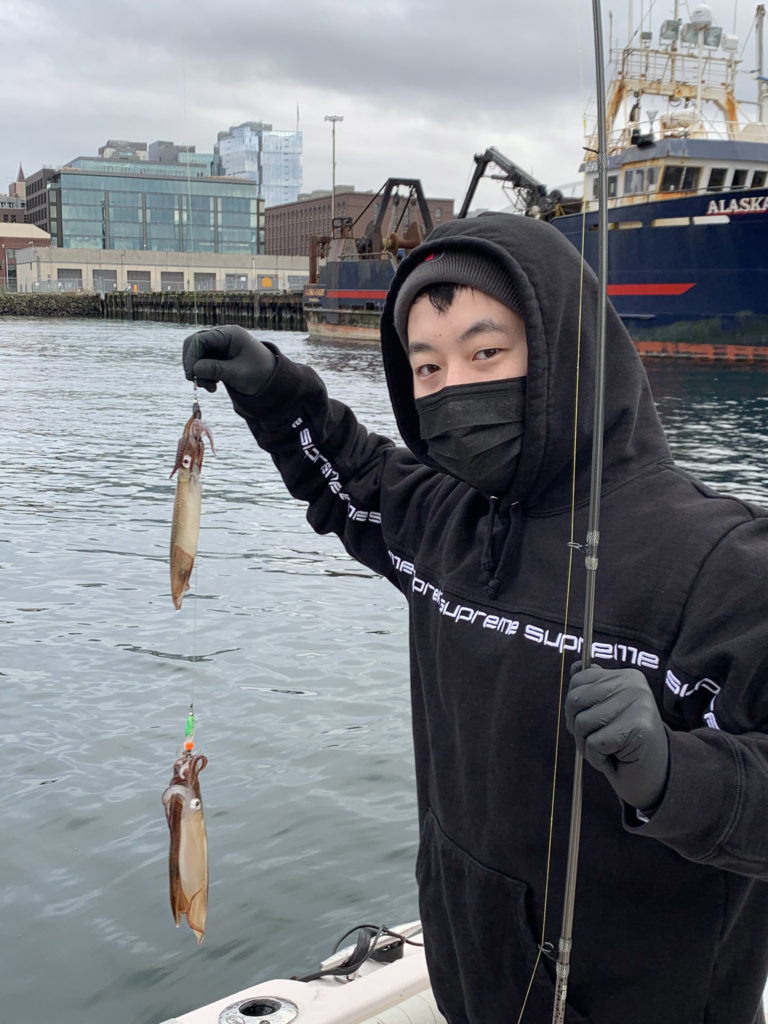
The New Year has arrived and I’ve got some fishing resolutions for you to set as immediate goals in the upcoming weeks:
Dance a Jig, Catch a Squid
Squid jigging has seen boost in participation over the past several years due to easy accessibility and excellent catches when returns are strong. Migrating squid usually make an early appearance from September to October, but the optimal time is December through January. Good news: Recently, squidding around Puget Sound has seen improvements for anglers mainly in Elliott Bay and off the Edmonds and Des Moines marinas. Surrounding piers in Puget Sound have also picked up, although remain a bit spotty, good one day and bad the next.
Nighttime on a flood tide is usually the best period to give it a go as squid are attracted to lights beaming off the public piers. When fishing from a boat, dangle powerful lanterns just off the side of the boat and above the surface of the water. Use a seven- to eight-foot trout fishing rod and spinning reel with lightweight braided fishing line of 5- to 6-pound test.
The weighted jigs are luminous or light-up plastic versions in pink, chartreuse, blue, red, green, and orange. Jigs don’t have hooks and instead have upward slanting sharp prongs. When you get a squid on your line, keep steady pressure when reeling up and don’t jerk or reel quickly. Unweighted lures are also used by squid jiggers and attach to a one-ounce lead weight.
The WDFW website has details on catching squid at: wdfw.wa.gov/fishing/basics/squid.
Reel in Some Chinook
For those who prefer chasing salmon in saltwater locations, the only show in town is southern Puget Sound (Marine Area 13) where some anglers are quietly finding fair catches of winter hatchery Chinook salmon. The key to success in the winter is locating the schools of herring baitfish.
Look for winter Chinook salmon around Gibson Point and Point Fosdick, Fox Point in Hale Passage, the northwest corner at the Sand Spit, Toy Point, and the Concrete Dock Fox Island Fishing Pier. Other deep southern sound spots are Nisqually Flats, Dover Point near Zangle Cove, Itsami Ledge, and Johnson Point.
Head for a Trout Hotbed
Big rainbow trout are on top of the list of fish to pursue in north central Washington.
Rufus Woods Reservoir on the Columbia River located between Chief Joseph and Grand Coulee dams is a well-known winter fishery where rainbow trout average 2 to 6 pounds, with some growing into the 20-pound range. The Colville Confederated Tribes (CCT), in cooperation with the Washington Department of Fish and Wildlife, produce and annually release hatchery-raised rainbow. The three net pens produce about 14 million pounds annually.
These trout tend to grow rapidly and are simply focused on gorging off the ample feed found along this vast 51-mile stretch between the towns of Bridgeport and Coulee Dam. The reservoir water temperature needs to drop below 60 degrees, which usually happens in late November or December. That triggers their metabolism and makes them more active and easier to catch in the winter. Fish are attracted to the hatchery pellet food source leaking out of the net pens.
Access to the shoreline on reservation land near the net pens is allowed through the CCT. The western shoreline requires a tribal permit to fish. The nearest boat launches to the net pens are located at Tim’s Ranch and Coyote Creek. An annual permit to fish or use facilities on the reservation is $80. (To buy a permit visit: colville.nagfa.net/online/.) Never tie your boat to the net pens and be aware of underwater anchor cables attached to the net pens so you don’t get your fishing gear tangled up. Boat anglers should troll across the edge of the net pen’s bottom corner and upstream and downstream but make sure to stay outside of the buoy that marks the snaggy anchor cables.
The lower net pen is about 33 miles above Chief Joseph Dam, and the middle net pen is closest to the mouth of Nespelem Creek, where a flat is located. You’ll see many fly and bank anglers in this area.
Trollers can use a Rapala, Yakima Bait Maglip, Flicker Shad, Wiggle Wart, Flatfish or Kwikfish in bright orange or fire tiger. You can also surface troll a Wedding Ring with a nightcrawler or a large woolly bugger fly behind a wiggle fin action disc going 1- to 2-mph. Shore-bound anglers: Use a salmon spinning or casting rod and reel, and for bait, stick with Berkley Power Bait or a similar dough bait in bright colors like green, red, orange, pink or rainbow types. You can also try a marshmallow and shrimp or nightcrawler. Be sure to use a heavier slip sinker to keep it on the bottom depending on currents along with a heavy leader.
The daily limit at Rufus Woods Reservoir is two rainbow trout including kokanee with no size restrictions. Chumming is not allowed. At Rufus Woods or within the Colville Designated Fishing Areas, either a tribal permit or WDFW license is acceptable. A WDFW license is required when fishing from the Douglas County shoreline.
Bundle up and pack your gear —and I’ll see you on the water soon!


